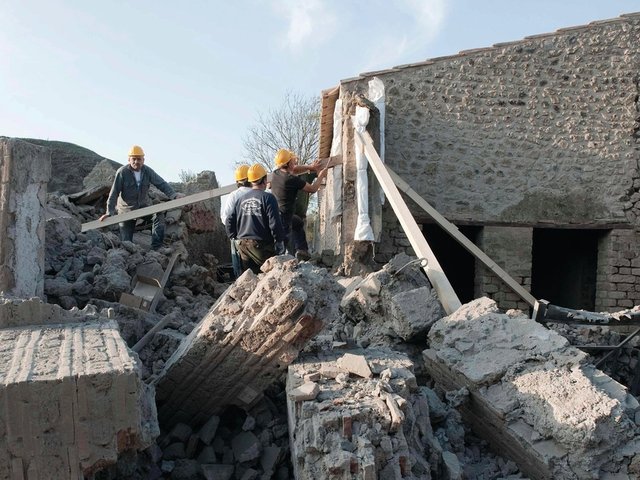The southern Italian regions of Sicily, Calabria and Campania have failed to spend hundreds of millions of euros in European Union (EU) culture and tourism funding, according to our sister newspaper Il Giornale dell’Arte. Elsewhere in Italy, Lombardy and Tuscany in the north and Basilicata and Puglia in the south are using between 70% and 80% of their allocated EU culture funding, in line with many EU countries.
Sicily and Naples have emerged as the worst offenders. The EU has withdrawn €51m in culture funding that was available to Sicily but which was not spent before the end of 2015. A report from Brussels, seen by Il Giornale dell’Arte, which lists projects that were proposed by Sicily between 2007 and 2013 but which did not receive funding, reveals a catalogue of errors, including badly written proposals, inconsistent figures, late submissions and even requests sent to the wrong email address.
Incomplete documentation The EU rejected a request for €2.4m from the Archaeological Museum of Aidone to renovate its galleries because of incomplete documentation and the lack of an “economic framework”. The museum was due to welcome back the Head of Hades (400-300BC), a Hellenistic terracotta fragment that was restored to Sicily by the J. Paul Getty Museum in Los Angeles in January. But the sculpture, thought to have been illegally excavated from a sanctuary at Morgantina in the 1970s, remains in limbo in Palermo, partly because the Aidone museum has not prepared a suitable display for it.
The chronic mismanagement of EU funds is threatening a number of poorly preserved Sicilian heritage sites. A €10m project to repair the crumbling Swabian castle at the port of Augusta, built by the Holy Roman Emperor Frederick II in the 13th century, was rejected because of “inconsistent figures and other bureaucratic errors”. After a formal complaint by the non-profit heritage organisation Italia Nostra, the state seized the castle in February, saying that it posed “a grave risk to public safety”. The president of Sicily, Rosario Crocetta, his predecessor, Raffaele Lombardo, and four regional managers are under investigation for neglect of duty and damaging the island’s cultural heritage.
A €2m application to restore the ancient Greek ruins of Eraclea Minoa, in the province of Agrigento, was refused because it was “sent to the wrong email address and for substantial shortcomings in the forms”.
Inappropriate events The EU has also recalled grants worth €70m that it deems to have been misspent by the Sicilian government. Sicily spent €95m from the European Regional Development Fund on 209 “major tourism events”, including an illuminated staircase for the patron saint’s festival at Caltagirone, a 10km road race at Castelbuono and the living nativity scene at Custonaci. According to the European Commission, the events failed to live up to the government’s claims and are evidence of the region’s “uneven and fragmented” approach to cultural tourism.
Naples, meanwhile, failed to spend €100m in EU funding that had been earmarked for the conservation of churches and monuments in its historic centre, a Unesco World Heritage Site since 1995, as well as various urban regeneration initiatives. Just eight of 28 planned projects were completed before the 2015 deadline. When contacted by The Art Newspaper, Carmine Piscopo, Naples’s city councillor for urban policies, said that the funding deadline was not realistic for the scale of the work. Sources for the European Commission have said that the regional government for Campania, where Naples is located, has submitted a request for the €100m scheme to roll over to the 2014 to 2020 budget. This request is now under consideration.
Unesco demands answers In January, Mechtild Rössler, the director of the Unesco World Heritage Centre, wrote to the Italian culture ministry and the Italian delegation to Unesco, demanding an explanation. Unesco is bound by its operational guidelines to investigate claims that a World Heritage Site has “seriously deteriorated” or that “the necessary corrective measures have not been taken within the time proposed”. The organisation could send a team of inspectors to Naples before the next World Heritage Committee meeting in Istanbul in July. In 2013, a report published by Il Corriere della Sera revealed that around 200 of the city’s historic churches—around half the total number—are closed and abandoned.
• With additional reporting by Silvia Mazza
• In our January issue (p53), we reported that Pompeii had received a last-minute reprieve after failing to spend €78m in EU funding for the Great Pompeii Project by the end of 2015



